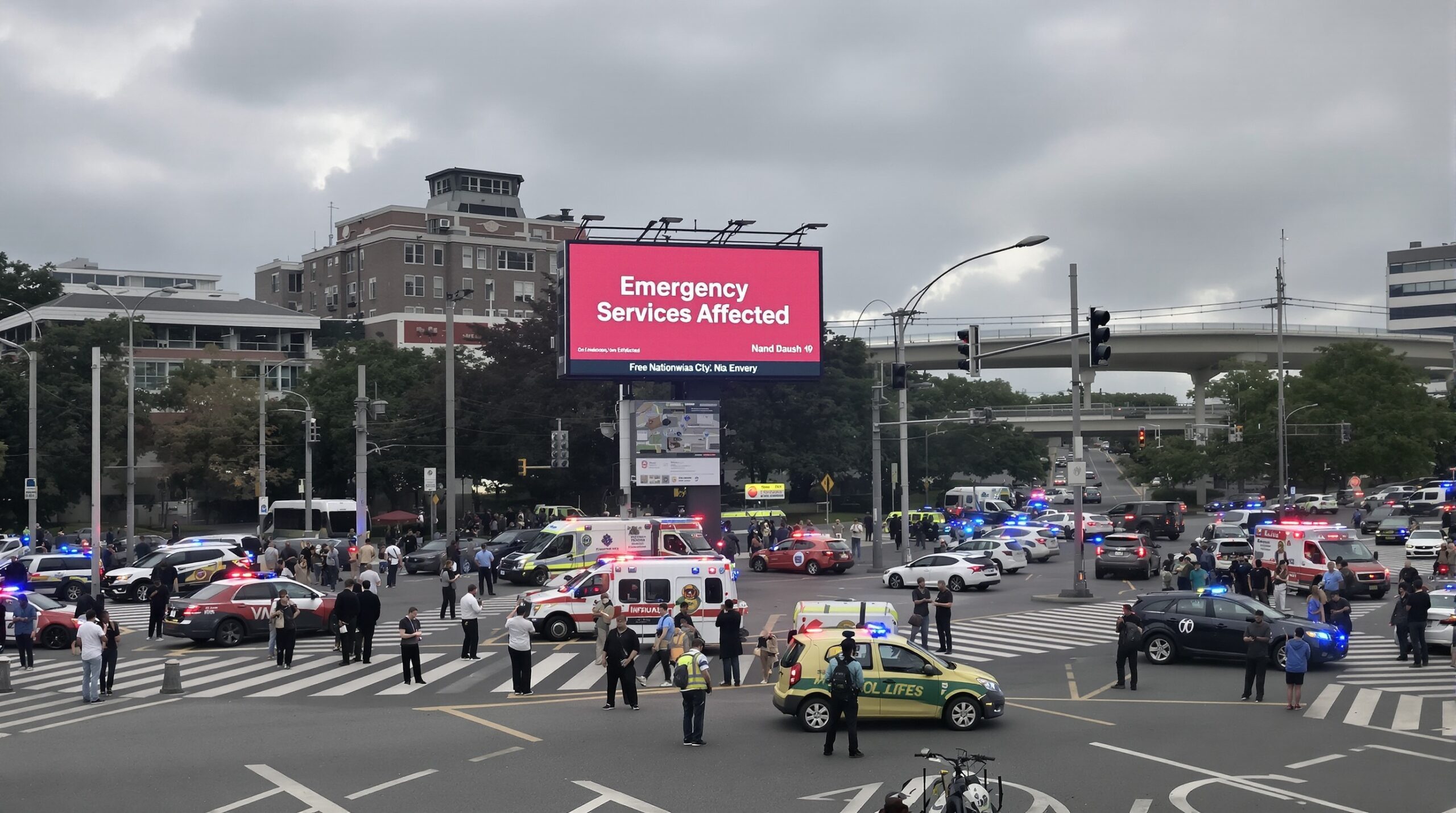A significant nationwide cell network outage plunged millions into digital silence, complicating daily communications and critical emergency responses. Networks that most people depend on for connection and safety revealed alarming vulnerabilities. The outage underscored the urgent need for more resilient telecommunications infrastructure across the country.
Scope and Impact of the Outage
The outage struck unexpectedly during peak daytime usage, affecting large urban centers and rural communities alike. Major wireless carriers reported widespread disruptions, with some regions losing all cellular service for several hours. Ordinary users experienced dropped calls, failed text messages, and complete app connectivity loss. Businesses also faced challenges, as payment systems and internal communication tools went offline.
More alarming was the situation for public safety officials. Emergency call centers reported a flood of failed 911 calls. First responders struggled to coordinate, hindered by the inability to communicate with each other and dispatch. Everyone from hospital workers to police officers felt the ripple effects.
Emergency Services in Crisis
The outage’s most critical consequence was the impact on emergency services. Many people could not reach 911 after experiencing medical issues or witnessing crimes. Callers heard busy signals or recorded messages, rather than connecting to life-saving help. Dispatchers described the situation as unprecedented and disturbing.
Some jurisdictions activated backup procedures, redirecting calls to landlines or alternate call centers. However, such measures risked slower response times and increased confusion. Reliance on digital cellular systems revealed a significant weakness in emergency preparedness. Situations like fires, traffic accidents, and medical emergencies became harder to manage quickly and effectively without reliable communication.
Key Factors Behind the Outage
Initial investigations traced the outage to a failure in a major network infrastructure hub. The issue cascaded, affecting related systems nationwide. Redundant systems meant to provide backup proved insufficient or failed to activate quickly. Network engineers worked through the night to restore service, but the damage was already significant.
Industry experts point to the increasing complexity of modern cellular networks. Software updates, hardware failures, and insufficient maintenance can all compound to create wider disruptions. Some analysts noted that as networks centralize, a single point of failure can jeopardize entire regions. Carriers strive to balance innovation with reliability, but sometimes overlook known vulnerabilities.
Public Reaction and Government Response
The outage quickly became a trending topic on social media, even as mobile users turned to Wi-Fi to connect instead. Citizens expressed frustration and concern over the lack of information from network providers. Many questioned why such a broad-scale failure could occur in modern times.
Government authorities responded with calls for immediate investigations. The Federal Communications Commission (FCC) and Department of Homeland Security launched probes into the outage’s cause. Public officials urged telecommunications companies to strengthen backup power, increase redundant infrastructure, and improve transparency with customers during crises.
Exposure of Infrastructure Gaps
This event starkly exposed infrastructure gaps in the country’s telecommunications systems. Experts observed that many regions still rely on outdated hardware and software, leaving them vulnerable to both physical and cyber risks. Investments in next-generation technologies have sometimes outpaced simultaneous improvements in reliability.
The trouble also highlighted how dependent modern society has become on continuous digital connectivity. Traditional landlines have faded out in many homes, eliminating a crucial backup for voice calls. Businesses, schools, hospitals, and government agencies often rely on a single network, which increases systemic risk.
Transitioning to more robust and decentralized communication systems could reduce the risk of similar outages in the future. Enhanced transparency during crises also builds public trust and supports more efficient emergency responses.
Lessons for the Telecommunications Sector
The recent outage serves as a wakeup call for both major carriers and smaller service providers. They are reminded that sustained investment in infrastructure, backup systems, and cybersecurity is essential. Industry watchdogs have renewed their demands for network redundancy and rigorous disaster recovery plans.
Telecommunications companies often focus on rolling out faster data speeds and wider coverage areas. Equally important, though, is the need to test and reinforce core systems for resilience. Regular simulations and independent audits could identify vulnerabilities before they trigger widespread service disruptions.
Policy Recommendations and Future Planning
Experts recommend a combination of public and private initiatives to shore up telecommunications safety. Policymakers could strengthen regulations requiring backup systems and routine stress-testing for carriers. Financial incentives might encourage investment in rural network upgrades, closing persistent coverage gaps.
Some advocates call for diversified communication solutions in hospitals, police stations, and emergency agencies. Satellite phones, radio systems, and legacy landlines could provide reliable fallbacks during digital failures. Cooperation between different carriers may enable roaming agreements, allowing devices to switch networks if one goes down.
Consumers, too, have a role in improving personal preparedness. Keeping non-digital contact lists, maintaining landlines, and having access to local emergency information supports resilience during outages. Local governments can disseminate educational materials and resources to encourage these practices.
Looking Ahead: Building a More Resilient Network
The nationwide outage underscored that reliable communication is essential for public safety and daily functioning. To prevent repeat scenarios, stakeholders must collaborate on strengthening national networks. This includes increased oversight, technological upgrades, and enhanced cross-sector partnerships.
Telecom companies have an opportunity to rebuild trust by being open about weaknesses and committed to continuous improvement. Regulators and emergency planners should support this transformation with clear standards, funding, and accountability. Only through shared commitment can the nation build a robust system ready for future challenges.
National security, economic stability, and public wellbeing all rely on uninterrupted communication systems. Addressing the exposed gaps now will help safeguard these priorities for years to come.

